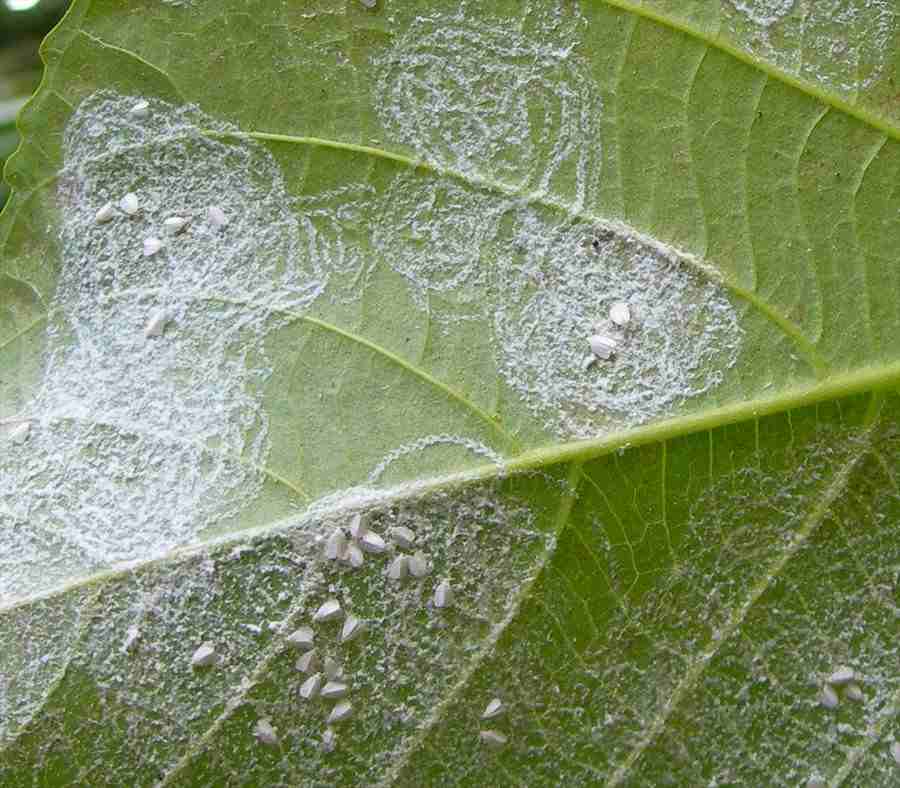
How to Control Whiteflies
Keep Those Suckers Out of Your Landscape
The South is no stranger to combating pesky pests once warm, humid weather sets in. Controlling whiteflies can be especially tough since they thrive year-round and have brutal effects on your landscape if not taken care of properly. Thankfully, waving the white flag isn’t your only solution. There’s plenty you can do to keep whiteflies from invading your landscape, and the first step is education. Here’s what you need to know.
Whiteflies are Unwelcome Guests
Whiteflies are an invasive species, native to South America and the Caribbean. Just as the name suggests, whiteflies are small insects with white wings and short antennae. They feed on the underside of leaves with sharp mandibles that pierce the plant and allow the whitefly to suck its nutrients. The byproduct of their feeding is honeydew, a sticky substance the whitefly secretes that leads to sooty black mold. Not only is the mold unsightly, but it can stain nearby surfaces like concrete.

Adult whiteflies measure 1/16 inch long, so they’re not always easy to see, and are sometimes mistaken for moths. But what is easy to see is their damage to the plant, which can manifest in stunted growth, yellow leaves, leaf drop, and in the worst cases, death.
Unfortunately, whiteflies are a year-round struggle in the southern and coastal states, with whiteflies attacking more than 250 different varieties of plants, including gumbo limbos, hibiscus, poinsettias, citrus and other fruits and veggies.
Among Florida’s Whiteflies, There Are 3 Top Offenders
Worldwide, there are over 1500 species of whiteflies, with dozens of species seen frequently in the South. While Florida has seen a wide variety, there are of 3 that cause the most trouble: Ficus whitefly, Rugose spiraling whitefly, and Bonday’s nesting whitefly.
- Ficus Whitefly
Ficus whiteflies are the picky eaters of the bunch. While other whiteflies are less discriminatory in selecting their host plant, ficus whiteflies are singularly focused on—you guessed it—ficus trees and hedges. You’ll know when a ficus is infected because its formerly lush foliage will yellow and eventually drop.
- Rugose Spiraling Whitefly
The spiraling whitefly got its name from the spiraled pattern in which it lays its eggs. Some of the spiraling whitefly’s common hosts include wax myrtle, live oak, palms and black olive.
- Bondar’s Nesting Whitefly
In addition to fruits like avocado, guava, lemon, mandarin orange and naval orange, the nesting whitefly also enjoys banyan trees and stinkwood. The nesting whitefly’s calling card is the characteristic pattern of wax that forms around its pupa, hence the name “nesting.”
Act Fast, Because Whiteflies Multiply FAST
As nymphs, whiteflies overwinter on leaves. Come spring, females can lay as many as 400 eggs, which hatch in roughly a week’s time. Immature whiteflies tend to blend in with the plant, but it won’t be long before they’re easier to spot. It only takes 25 days for the whitefly to mature.
Thankfully, treatments are available, both to treat and prevent infestations. Spraying the infected plant with a strong stream of water is a low-tech solution, so long as it’s followed up with an application of insecticidal soap or a horticultural spray.
More serious infestations may require the use of a systemic insecticide. Your landscape partner will be sure to choose one that’s recommended for the control of whiteflies, but won’t harm beneficial insects like lady bugs, who happen to be a predator of the whitefly.
In the event of heavy infestations, it’s best to remove and replace the affected plant before more of your landscape is affected, and clippings from an infested plant should always be disposed at the closest landfill to avoid further spread
Aside from these solutions, one of the best things you can do to prevent an infestation is maintain a regular fertilization schedule. Doing so bolsters the health of your plants and helps your landscape thrive while keeping pests out. If you suspect whitefly damage or want to prevent problems before they begin, request a free quote or give our team a call at 844.235.7778">844.235.7778.




